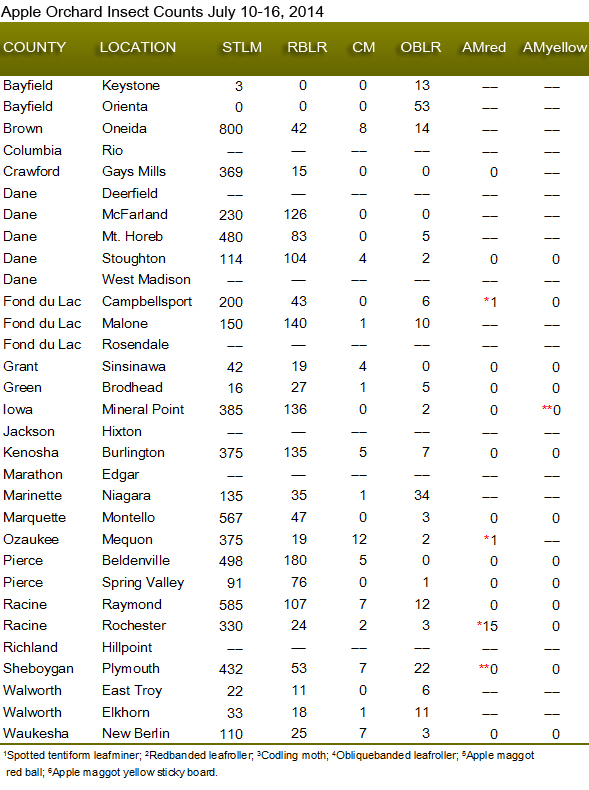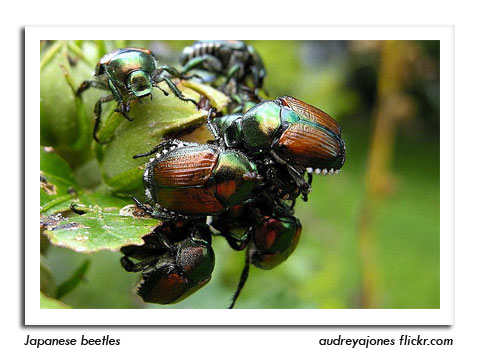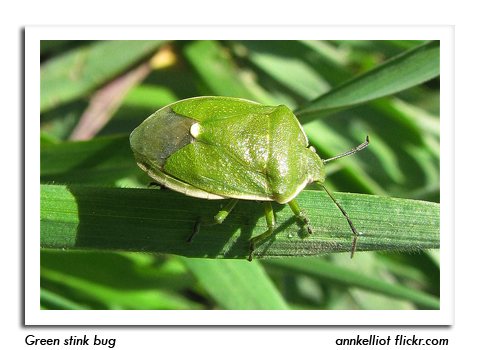
 |
|
|
Fruits
Volume 59 Number 11 Date 07/17/2014 APPLE MAGGOT - Emergence of flies continued for the third week, with a high count of 15 flies on an unbaited red sphere trap reported from Rochester in Racine County. Apple orchards affected by recent hailstorms are at increased risk of infestation by this pest since hail-damaged fruits release volatiles that can attract flies from long distances. Apple maggot traps should be cleaned of non-target flies periodically and recoated with insect sticky trap material if necessary. CODLING MOTH - Counts have decreased in most orchards as the first flight subsides. Orchardists who have not observed a distinct decline in moth activity and are having difficulty determining the most effective treatment window should use an accumulation of 1,000 degree days from the spring biofix in late May to time the start of larvicide applications. As a general rule, approximately 1,000 degree days are required between the first and second larval generations. JAPANESE BEETLE - Numbers are increasing in fruit and field crops over much of the state, particularly in the east-central and northwestern counties. This beetle could be a more serious problem this season than in the last two or three years since soil moisture levels have been very favorable for larval survival. Spot treatment of individual trees may be warranted for orchards that experience problems. SPOTTED TENTIFORM LEAFMINER - The second flight has peaked and counts are declining at most monitoring sites. Egg laying is expected to be heavy as long as the moths are numerous. Apple orchards with populations greater than one mine per leaf or a history of infestation should consider treatment of second generation larvae to reduce build-up of leafminers before the third flight begins next month. STINK BUG - Populations are increasing in field and fruit crops, especially in orchards with ground covers or adjacent to uncultivated areas. Apple growers should begin scouting fruits for the dimples or dark, irregular circular depressions typical of stink bug feeding and flag sites with multiple depressions on the same fruit or tree. Damage by this pest is often limited to specific areas in the orchard and depending on the distribution of the population, spot treatment may be adequate. Apple growers should not mow cover crops or weeds when stink bugs are present to prevent the insects from moving into the trees. -- Krista Hamilton, DATCP Entomologist 




|
|
|